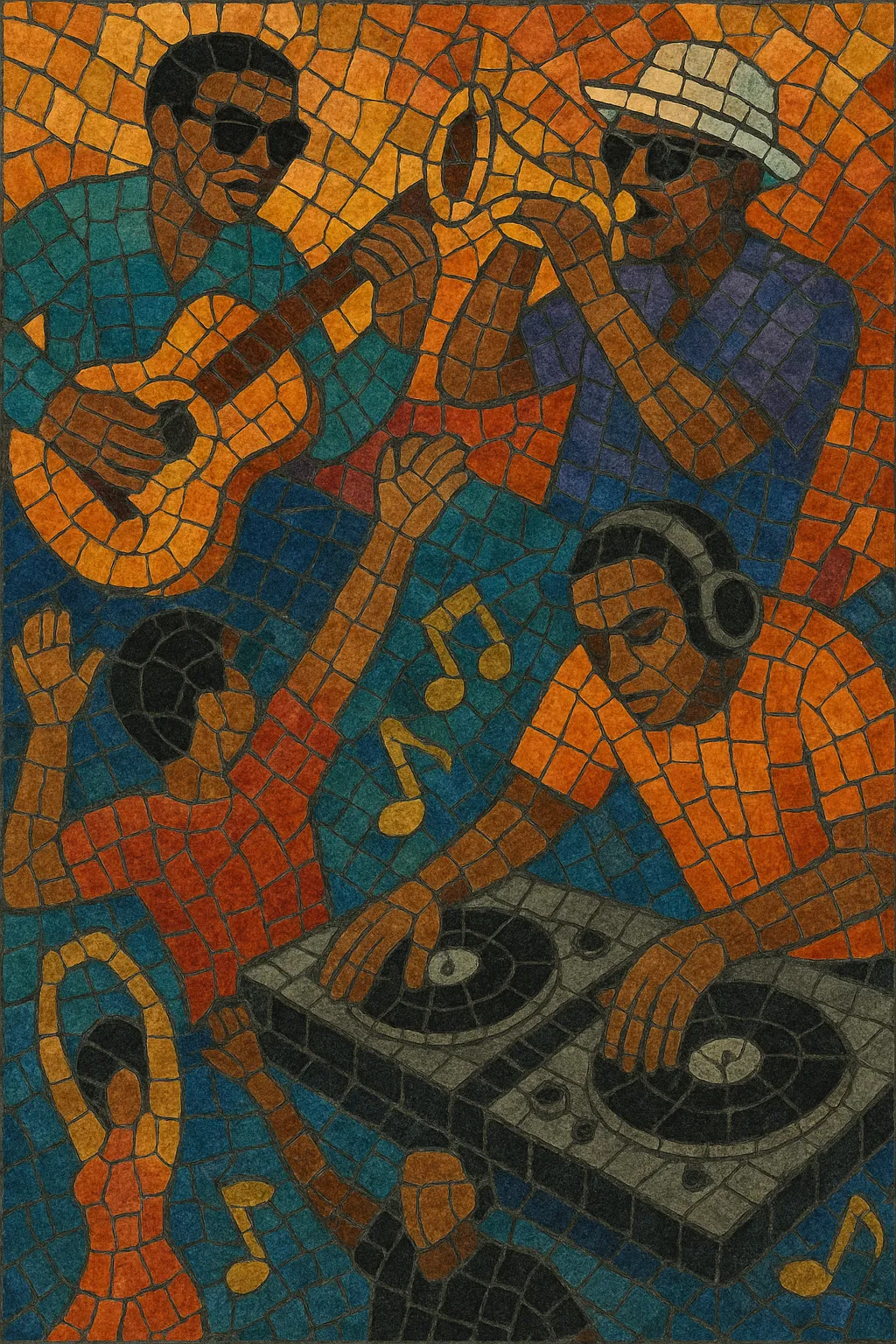
Funky breaks is a breakbeat-driven dance style that leans heavily on sampled funk and soul riffs, big basslines, and hip hop turntablism aesthetics.
It favors party-friendly grooves over the darker edge of other breakbeat variants, using syncopated drum breaks, horn stabs, guitar licks, vocal shouts, and scratching to create a lively, feel‑good atmosphere.
Typical tempos sit in the 120–135 BPM range, with swung sixteenths and punchy drum layering that keep the floor moving without sacrificing musicality.
The sound grew out of 1990s US and UK scenes—drawing equally from 1970s funk, hip hop DJ culture, Miami bass, big beat, and electro-funk—and later overlapped with nu-funk, ghetto funk, and glitch hop communities.
Funky breaks emerged in the mid-to-late 1990s as DJs and producers fused classic funk and soul sampling with breakbeat club rhythms. In the United States, the Florida/Miami scene (often called “Florida breaks” or colloquially “funky breaks”) pushed bass-forward, party-centric breakbeats influenced by Miami bass and hip hop. In parallel, the UK breakbeat and big beat movements emphasized crate-dug funk loops, block‑party energy, and DJ techniques like scratching and cutting.
Independent labels and DJ-led imprints spread the sound globally. UK outfits associated with Finger Lickin’ Records and related crews popularized a tight, punchy production ethos with bold funk samples and big breakdowns, while US artists connected Florida breaks with more sample-heavy, hip hop-informed approaches. Club and festival circuits cemented a recognizable format: DJ-friendly intros, chunky break loops, catchy funk hooks, and call-and-response drops.
As digital production and DJing became ubiquitous, funky breaks intersected with nu-funk, ghetto funk, and glitch hop. Producers slowed some grooves toward ~110–115 BPM (ghetto funk territory) or embraced heavier, cut‑up sample design from glitch hop, while others retained the classic 125–135 BPM pulse. The style’s crate-digging ethos and turntablism roots remained central, even as sound design modernized.
Funky breaks persists as a DJ- and party-driven niche with a strong festival presence and an enduring appeal for dancers who want funk musicality with breakbeat energy. Its DNA lives on in contemporary bass music, ghetto funk, and glitch hop, and the genre continues to thrive through edits, bootlegs, and sample-savvy originals.

